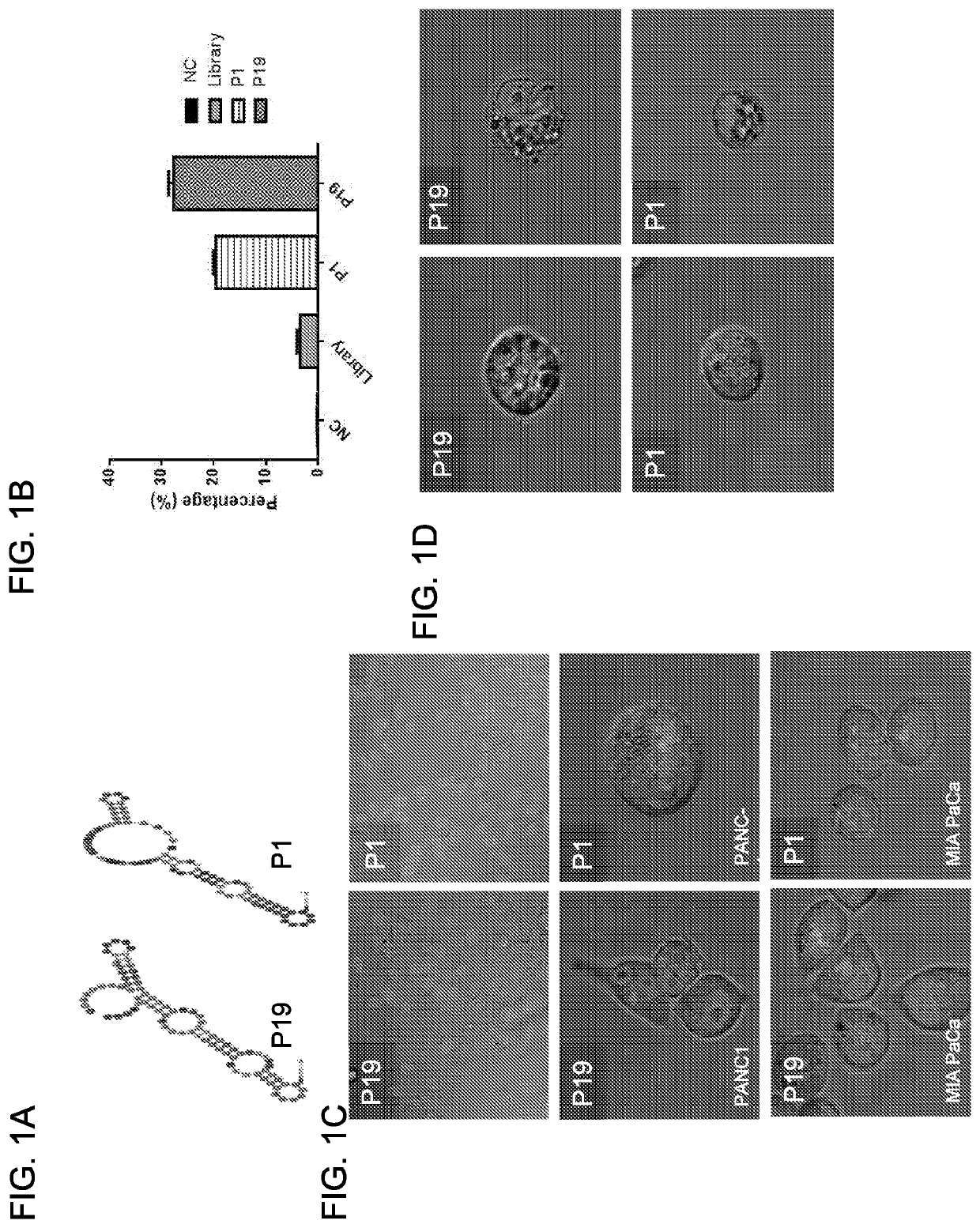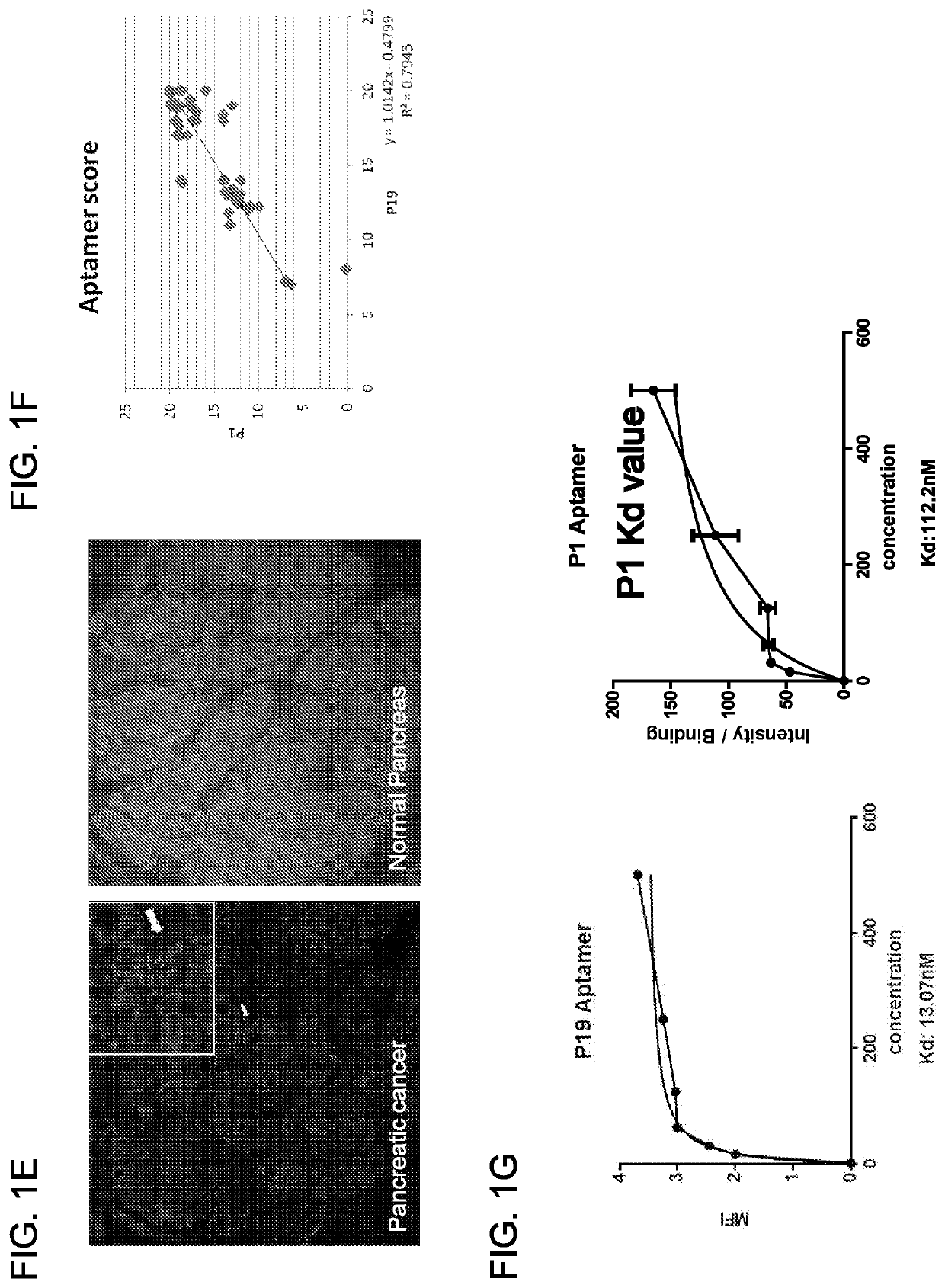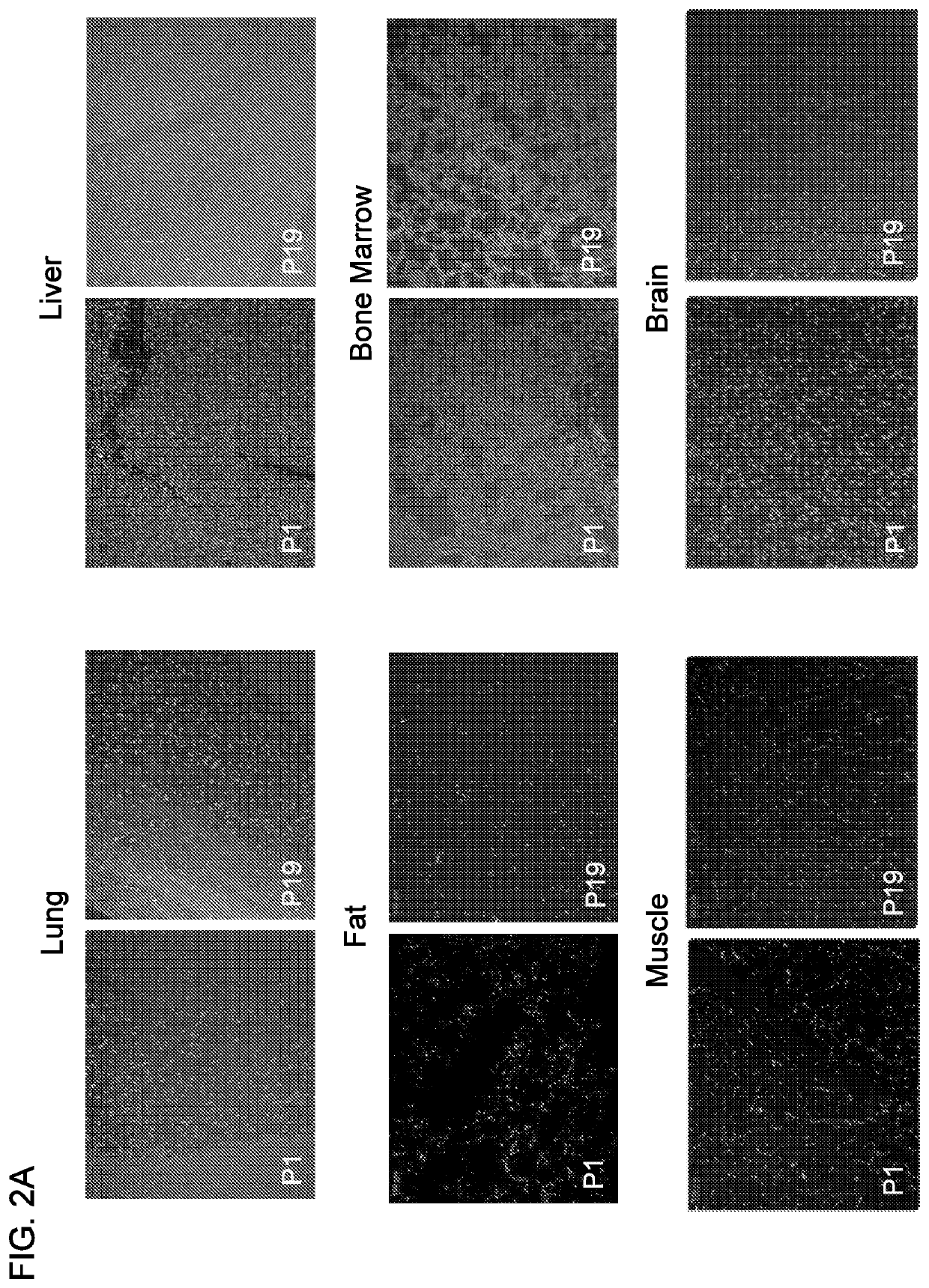Anti-cancer RNA aptamers
a technology of aptamers and anticancers, applied in the field of anticancer rna aptamers, can solve the problems of limited progress made, limitation of conventional treatment, and limited improvemen
- Summary
- Abstract
- Description
- Claims
- Application Information
AI Technical Summary
Benefits of technology
Problems solved by technology
Method used
Image
Examples
example 1
[0225]In the present study, we employed a 2′-fluropyrimidine-RNA (2′F-RNA) combinatorial library and isolated 2′F RNA aptamers through a whole cell-based SELEX for the targeted delivery. As a non-KRAS-based approach that targets a silenced gene, we activated epigenetically silenced transcription factors C / EBPα as a novel druggable target in pancreatic cancer. The anti-tumor effects of targeted delivery of C / EBPα-saRNA by cancer specific RNA aptamer into PDAC was investigated in vitro and in vivo xenograft model along with identification of aptamer binding cell membrane proteins.
[0226]In Vitro Selection of RNA Aptamers to the Intact Target Cells
[0227]The human pancreatic adenocarcinoma cells (Panc-1) were used as target cells for the aptamer selection and negative cells were used for the counter-selection steps to remove irrelevant binding. A library of 2′F RNAs was used to increase nuclease-resistance and enhance aptamer folding. To isolate 2′F RNA aptamers binding to intact cells, ...
example 2
[0277]Determine the Effect of Anti-Hsp70 RNA Aptamers in Mitochondria Apoptosis
[0278]The up-to-date data indicate that cancer cells become ‘addicted’ to Hsp70 through chaperone's activity on multiple survival pathways, specifically cancer specific features such as hypoxia, oxidative stress, and altered pH. The overexpression of Hsp70 in pancreatic adenocarcinoma increases tumorgenicity and inhibit apoptosis (Aghdassi, Phillips et al. 2007). Hsp70 is constitutively expressed on cell surface of human tumor, not normal cells (Hantschel, Pfister et al. 2000, Shin, Wang et al. 2003). The translocalization of Hsp70 on the cancer cell surface and organelle distribution is related to their specific lipid compositions (Arispe, Doh et al. 2004, Gehrmann, Liebisch et al. 2008, Mahalka, Kirkegaard et al. 2014). Interestingly, silencing of Hsp70 with antisense results in massive death of cancer cells, whereas non-cancer cells are not affected (Nylandsted, Rohde et al. 2000). Inhibition of Hsp70 ...
example 3
[0283]C / EBPα-conjugated P19 and P1 demonstrate strong anti-proliferation in cultured cells. Since downregulation of C / EBPα has been previously reported to result in the formation of pancreatic intraepithelial neoplasms, (14) we designed a conjugated P19 and P1 aptamer with C / EBPα-saRNA to exploit targeted delivery of the saRNA into pancreatic cancer cells for activation of C / EBPα. In order to maintain functional integrity of the molecule we placed ‘sticky sequences’ (a sequence of 16 nucleotides that prevent structural hindrance) between the P19 / P1 aptamer and either C / EBPα or a scrambled saRNA oligonucleotide. The P19 and P1 conjugates showed successful PANC-1 internalization (FIG. 14A). To investigate gene activation in vitro, the P19 and P1 conjugated C / EBPα-saRNA or scrambled RNAs were added to PANC-1 cell culture media in the absence of any transfection reagent. Cells treated with the conjugated C / EBPα-saRNA aptamers showed significantly higher levels of C / EBPα mRNA (FIG. 14B) ...
PUM
| Property | Measurement | Unit |
|---|---|---|
| dissociation constant | aaaaa | aaaaa |
| dissociation constant | aaaaa | aaaaa |
| time | aaaaa | aaaaa |
Abstract
Description
Claims
Application Information
 Login to View More
Login to View More - Generate Ideas
- Intellectual Property
- Life Sciences
- Materials
- Tech Scout
- Unparalleled Data Quality
- Higher Quality Content
- 60% Fewer Hallucinations
Browse by: Latest US Patents, China's latest patents, Technical Efficacy Thesaurus, Application Domain, Technology Topic, Popular Technical Reports.
© 2025 PatSnap. All rights reserved.Legal|Privacy policy|Modern Slavery Act Transparency Statement|Sitemap|About US| Contact US: help@patsnap.com



